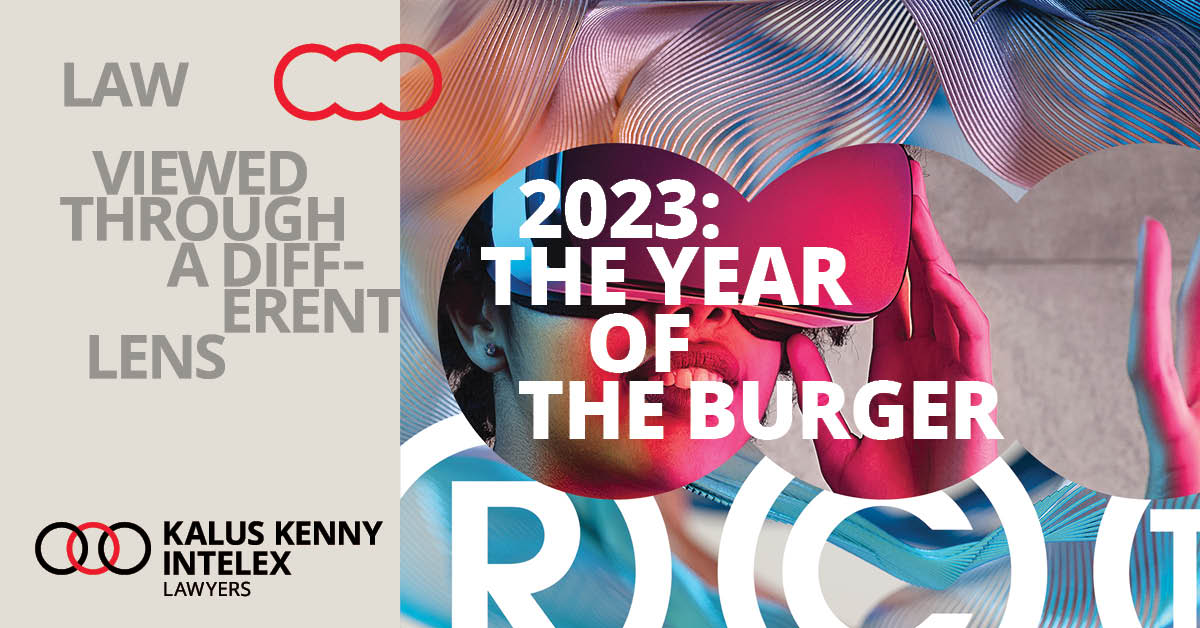From the Big Mac v Big Jack to the KFC v HFC – 2023 was the year of the burger. In Australia, the burger debate was first brought to our attention in 2020 following a marketing campaign by Hungry Jack’s Pty Ltd (Hungry Jack’s) for its limited-edition Big Jack burger. Hungry Jack’s (better known as Burger King in some countries) and McD Asia Pacific LLC (McDonald’s) are both global fast food chains known for their burger and fry combination.
It was following the decision of the Big Mac v Big Jack that we then saw the lessor known battle initiated by KFC THC V Ltd (KFC) in relation to an application by Grill’d IP Pty Ltd (Grill’d) to register ”HFC” as a trade mark in respect of the healthier chicken options available on its menu.
McD Asia Pacific LLC v Hungry Jack’s Pty Ltd [2023] FCA 1412
Background
McDonald’s initially argued that, amongst other things, the “BIG JACK” and “MEGA JACK” trade marks owned by Hungry Jack’s should be cancelled on the basis that they were deceptively similar to the well known McDonald’s “BIG MAC”. It was also alleged that the marks had been used in bad faith by taking advantage of the similarities between the two burgers and essentially selling a ‘copycat’ of the McDonald’s burger.
In response Hungry Jack’s argued that it had no intention of selling a ‘copycat’ of the McDonald’s burger and their only intention for the new name was for consumers to compare their products, relying on ‘cheekiness’ being part of the Hungry Jack’s brand.
The decision
Justice Burley of the Federal Court ultimately found that there was no trade mark infringement in Hungry Jack’s use of the “BIG JACK” and “MEGA JACK” marks and that they were not deceptively similar to McDonald’s “BIG MAC”. The decision was based on the comparison of the words MAC and JACK, which were found to be phonetically and semantically different and therefore unlikely to be confused by a consumer – similarly to how one person might recall the name of another person without confusion.
Further, in consideration of the information before the Court, Justice Burley agreed with Hungry Jack’s in that ‘cheekiness’ was part of its brand and that they had no intention to cause confusion to consumers. Accordingly, the decision was made that the “BIG JACK” and “MEGA JACK” marks are valid and would remain on the trade mark Register.
KFC THC V Ltd v Grill’d IP Pty Ltd [2023] ATMO 192
Background
KFC, being the global fast food chain well known for its ‘finger lickin’ good’ fried chicken and secret herbs and spices, launched its opposition against Grill’d – an Australian-owned restaurant chain who markets itself as a healthier and fresher alternative to the other major fast food chains – for the introduction of its “HFC” burger.
In its opposition to the registration of the Grill’d mark, KFC argued that the “HFC” mark was:
- substantially identical to or deceptively similar to the “KFC” mark, which had acquired a reputation in Australia;
- likely to deceive or cause confusion; and
- made in bad faith.
Grill’d however disagreed with this argument, submitting that the marks were distinguishable because they are both used as initialisms and not acronyms – meaning that that each letter is pronounced individually. This argument meant that the only commonality of the marks is the use of the letters ”FC”, which are descriptive of “fried chicken”. Grill’d further argued that it is unlikely for there to be confusion between the two marks as the concept of the products is different, noting that the letter “H” refers to “Healthy”, and K refers to ”Kentucky”.
The decision
Whilst the Hearing Officer did not agree that in the context of the use of each mark, the ‘FC’ lettering was an obvious reference to ‘fried chicken’ , they did rely on the precedent set by Australian Meat Group Pty Ltd v JBS Australia Pty Ltd [2018] FCAFC 207, whereby the Court determined that ‘consumers are conditioned to the use of acronyms and as such, are used to rely on small differences to distinguish between acronyms without being confused or misled by them’ and therefore concluded that the “HFC” mark was neither substantially identical nor deceptively similar to the “KFC” mark.
Importantly, the Hearing Officer emphasised the scope afforded by trade marks containing acronyms, and unless bad faith can be demonstrated, closer than normal similarities (such as one letter differences), are expected and tolerated.
Key takeaway
Whether it’s cheekiness or comparative advertising driving your business’ marketing strategy, the outcome of these cases serve as a timely reminder to ensure your business has sought the proper advice before rolling out any ‘risky marketing’ ideas to lower the risk of potential trade mark infringement



